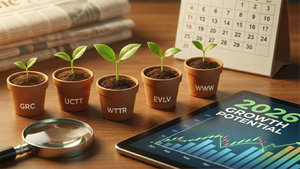Remote monitoring software has become an indispensable tool for modern organizations. As businesses evolve and increasingly adopt remote and hybrid work models, the need to maintain efficiency, security, and productivity has never been more critical. Remote monitoring software addresses these needs by enabling organizations to oversee their digital operations, ensure compliance, safeguard data, and optimize performance from any location. This blog post explores the multifaceted role of remote monitoring software in an organization, highlighting its benefits, applications, and best practices.
1. Introduction to Remote Monitoring Software
Remote monitoring software refers to a suite of tools and applications designed to monitor, manage, and control IT infrastructure, networks, and endpoints from a remote location. This software is essential for IT administrators, managers, and cybersecurity professionals to ensure that all systems operate smoothly and securely, regardless of physical location.
Key functionalities typically include real-time monitoring, alerting, reporting, and automated responses to various incidents. These capabilities enable organizations to maintain a high level of operational efficiency and minimize downtime, thereby improving overall productivity.
2. Enhancing IT Infrastructure Management
One of the primary roles of remote monitoring software is in IT infrastructure management. By providing a centralized platform for monitoring all IT assets, the software helps organizations keep track of their hardware, software, and network performance.
- Real-Time Monitoring: Continuous monitoring of servers, routers, switches, and other network devices helps detect issues before they escalate. For instance, IT teams can receive alerts about abnormal CPU usage or network traffic spikes, allowing them to take proactive measures.
- Asset Management: Keeping an updated inventory of all IT assets is critical for resource planning and budgeting. Remote monitoring software helps track the usage, status, and lifecycle of hardware and software assets.
- Network Performance: Ensuring optimal network performance is crucial for business operations. The software can monitor bandwidth usage, identify bottlenecks, and suggest improvements to enhance network efficiency.
3. Boosting Security and Compliance
With cyber threats becoming more sophisticated, ensuring robust security and compliance is paramount. Remote monitoring software plays a critical role in protecting an organization’s data and IT infrastructure.
- Threat Detection and Response: The software continuously scans for potential security threats, such as malware, unauthorized access, and suspicious activities. Advanced solutions incorporate artificial intelligence (AI) and machine learning (ML) to identify and mitigate threats in real time.
- Compliance Management: Many industries are subject to stringent regulatory requirements. Remote monitoring software helps organizations comply with standards such as GDPR, HIPAA, and PCI-DSS by providing detailed audit trails, access controls, and regular compliance reports.
- Data Protection: Protecting sensitive data from breaches is crucial. The software can enforce encryption, monitor data transfers, and detect anomalies that may indicate a data breach.
4. Facilitating Remote Work and Collaboration
The shift to remote and hybrid work models has been accelerated by the global pandemic. Remote monitoring software has become essential in facilitating this transition and ensuring that remote teams can work efficiently and securely.
- Remote Access: Employees need secure access to organizational resources from various locations. Remote monitoring software provides secure VPNs, remote desktop access, and multi-factor authentication (MFA) to ensure safe connectivity.
- Collaboration Tools: Integrated collaboration tools such as chat applications, video conferencing, and file-sharing platforms are often part of remote monitoring solutions. These tools enable seamless communication and collaboration among team members, regardless of their physical location.
- Performance Monitoring: Monitoring the productivity and performance of remote employees can be challenging. Many managers ask, "how to know if remote employees are working?" Remote monitoring software provides insights into application usage, screen activity, and task completion, helping managers support their teams effectively.
5. Enhancing Operational Efficiency and Productivity
Operational efficiency and productivity are critical metrics for any organization. Remote monitoring software helps achieve these goals by automating routine tasks, optimizing resource usage, and providing actionable insights.
- Automation: Routine maintenance tasks such as software updates, patches, and backups can be automated using remote monitoring software. This reduces the burden on IT staff and ensures that systems remain up to date.
- Resource Optimization: By monitoring resource usage, organizations can identify underutilized assets and optimize their allocation. This can lead to cost savings and improved performance.
- Reporting and Analytics: Detailed reports and analytics provide valuable insights into system performance, security incidents, and user behavior. These insights help organizations make informed decisions and continuously improve their operations.
6. Supporting Business Continuity and Disaster Recovery
Ensuring business continuity and having a robust disaster recovery plan are essential for mitigating the impact of unexpected events. Remote monitoring software supports these efforts by providing tools for backup, recovery, and continuity planning.
- Backup Management: Regular backups are critical for data protection. Remote monitoring software can automate the backup process, ensuring that data is regularly and securely backed up to remote locations or cloud storage.
- Disaster Recovery: In the event of a disaster, quick recovery is crucial. The software helps organizations implement and test disaster recovery plans, ensuring that critical systems and data can be restored promptly.
- Continuity Planning: Monitoring tools can simulate various disaster scenarios to test the resilience of IT systems and identify potential weaknesses. This helps organizations refine their continuity plans and improve their preparedness for unexpected events.
7. Implementing Best Practices for Remote Monitoring
To maximize the benefits of remote monitoring software, organizations should adhere to best practices in implementation and usage.
- Choose the Right Solution: Selecting the appropriate remote monitoring software is critical. Organizations should evaluate their specific needs, such as the size of their IT infrastructure, security requirements, and budget, to choose a solution that fits their requirements.
- Training and Support: Proper training for IT staff and end-users is essential for effective use of the software. Organizations should invest in training programs and ensure that support is readily available.
- Regular Updates and Maintenance: Keeping the software updated with the latest patches and features is crucial for maintaining security and performance. Regular maintenance should be scheduled to ensure the software operates smoothly.
- Monitor Key Metrics: Identifying and monitoring key performance indicators (KPIs) helps organizations track the effectiveness of their remote monitoring efforts. Metrics such as system uptime, incident response time, and security incident frequency provide valuable insights.
In a Nutshell
Remote monitoring software is a powerful tool that plays a vital role in modern organizations. From enhancing IT infrastructure management and boosting security to facilitating remote work and improving operational efficiency, the benefits are substantial. By adopting best practices and choosing the right solution, organizations can leverage remote monitoring software to drive productivity, ensure business continuity, and stay ahead in an increasingly digital and remote work environment.
The implementation of remote monitoring software represents a strategic investment in the future of work. As technology continues to advance, and the workplace continues to evolve, organizations that embrace remote monitoring will be better positioned to adapt, thrive, and maintain a competitive edge in the market.
Media Contact
Company Name: Insightful.io, Inc
Email: Send Email
Country: United States
Website: https://www.insightful.io/blog/how-to-know-if-remote-employees-are-





